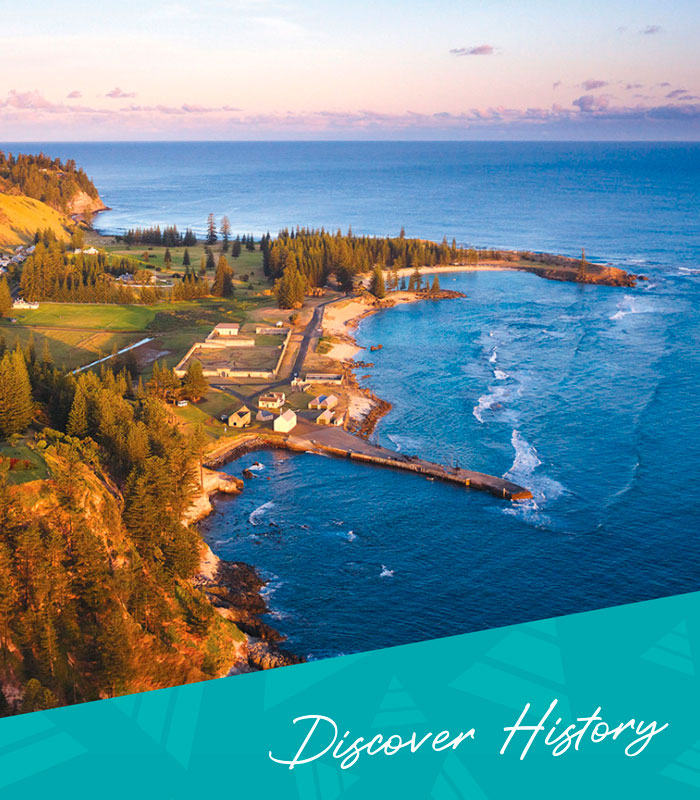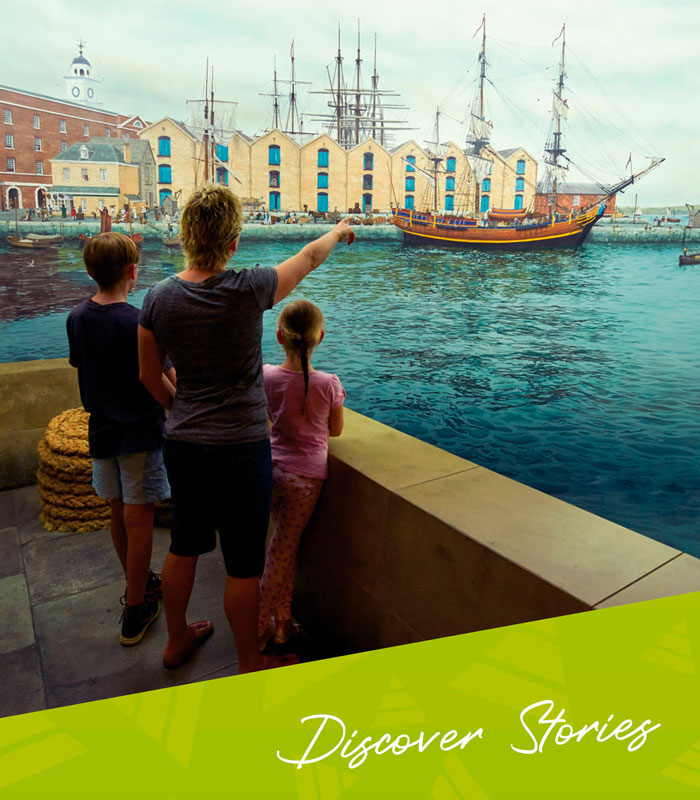
It is over two hundred years since Norfolk’s First British Settlement was completely abandoned. Burnt out ruins, farms rapidly returning to wilderness, and a few stray pigs, goats and chickens were all that remained after February, 1814. The original convict outpost on Norfolk Island was closed. As the Napoleonic Wars dragged on in Europe, the British authorities, suspicious of French imperial ambition in the South Pacific, ordered that nothing – “…no inducement for human beings … to visit that place” – should remain.
While New South Wales and Van Diemen’s Land prospered and were attracting more free settlers, Britain still regarded these colonies as dumping grounds for their overflowing prisons. The industrial revolution had brought great changes to British society from the 1750s, and with a rapid rise in population and unemployment, crime flourished. Human slavery was yet to be abolished; only men of property could vote, and women and children had no rights.
The wealthy and powerful felt no compassion for the ‘lower orders’ – the ill-educated and disenfranchised poor – and advocated long sentences, flogging, execution and transportation as fitting punishments for convicted criminals. Banishing them to Australia, to suffer and toil while they served their sentences, was a solution to England’s congested gaols and hulks (prison ships). The notion that wrongdoers should receive humane treatment was not even considered.
Indeed, some in England felt shipping convicts to a new land, even in chains, was too merciful. In 1786 Alexander Dalrymple published a pamphlet against “…the intended thief-colony at Botany Bay” arguing: “…they will be sent, at the Public Expense, to a Good Country and moderate Climate, where they will be their own masters.” Many convicts did eventually win their freedom, and thrived in a new environment, but those condemned to lengthier terms, or who rebelled against the authorities, endured greater hardships. Attempting to escape, committing another crime, or unruly behaviour could mean the gallows or a severe flogging – a hundred lashes was not uncommon. Incorrigible felons might also be sent to remote penitentiaries to face long hours of back-breaking labour, more beatings and other tortures. Van Diemen’s Land had institutions at Macquarie Harbour, Maria Island and Port Arthur, while New South Wales had gulags at Newcastle, Moreton Bay and Port Macquarie. From 1825 to 1856 Norfolk Island was re-opened as the ultimate ‘convict hell’, where only the ‘worst’ would be incarcerated.
In 1824 Brisbane, Governor of New South Wales, wrote: “…the felon who is sent there is forever excluded from all hope of return.” The next year Darling, the new Governor, confirmed the re-established colony “…as a place of the extremest punishment, short of Death.” It was an age when corporal punishment was the norm. Most of the commandants were military men so they governed by martial law and this, inevitably, led to a society where prisoners were starved, abused, humiliated and cruelly disciplined; such ‘hardened ruffians’ were to be controlled by chains, leg-irons, and the cat-o-nine tails.
Those sent to Norfolk Island over the next thirty years could expect petty tyranny and days spent labouring in the fields or constructing great stone buildings. Breaking rules, or displeasing guards, might see you bound by heavy chains, or irons, and scourged. Other punishments included reduced rations, solitary confinement, the bridle gag or the crank mill. Murders, suicide pacts, mutinies, rape and informer networks were everyday features of prison life. Inmates were disciplined for singing, smiling, ‘not walking fast enough’ and possessing tobacco. Alexander Maconochie, Commandant on Norfolk Island from 1840 to 1844, attempted to treat the men like human beings; rewarding good behaviour and encouraging them to read, play music and grow their own food. However, Maconochie’s ideas were considered too radical by his superiors and he was replaced. His successor, Major Childs, re-instituted a harsher regime, and another decade of floggings, human misery and degradation followed.
Attitudes were altering, however, and when slavery ended, throughout the British Empire, in 1833 people began questioning the morality of treating convicts, especially petty criminals and young offenders, like slaves. The 1840s Chartist Movement, which fought to win voting rights for all men, also brought change and there was a rising tide of support for improved social conditions. The cruel excesses of the Commandants who ruled Norfolk Island during the Second British Settlement began to be less accepted.
In 1840 transportation to New South Wales ceased, but other colonies continued to receive prisoners. Opposition grew more strident; the gold rushes brought new settlers, and prosperity, and free men didn’t want the taint of convictism. The old penal system was too expensive; and too attractive for felons hoping to make a fresh start. Van Diemen’s Land took criminals until 1853, but damning reports of cruelty on Norfolk Island, and rising costs, led to the Second British Settlement’s closure in 1855. The struggling Western Australian colony at Swan River finally ended transportation in 1868. Over an eighty year period, 164,000 convicts were brought to Australia’s shores.
Symptomatic of changing attitudes, and written in support of prison reform, was the success of Marcus Clarke’s epic novel, For the Term of His Natural Life, published in 1874. It tells the story of an innocent man, Rufus Dawes, sent to Van Diemen’s Land and Norfolk Island for crimes he did not commit. After extensive research, using official reports and accounts, Clarke crafted the saga as “…an attempt to expose the infamies… [of] the old transportation system.” Appearing only six years after transportation ended, and less than two decades after Norfolk Island’s Second British Settlement closed, Clarke claimed certain:
“…episodes are merely dramatised versions of facts. I have taken much trouble to collect materials for the story, and to read up and collate the almost forgotten records of early colonial prisons. I want to show that in many instances the law makes the criminal.”
Clarke arrived in Victoria, from Britain, as a young man and worked as a journalist, writer and librarian in Melbourne. Slightly bohemian, and often in debt, he died in 1881 aged only 35. For the Term of His Natural Life was his masterpiece and left a deep impression on Australian society. A contemporary reviewer wrote:
“The whole book blazes with horrors. He does not spare us a manacle. We see the iron enter into the soul of Rufus Dawes, and shudder to think that it is all true. We have murders in quantities, a ship on fire, typhus fever in a convict ship, mutiny, suicide, cannibalism, buckets of blood…and other cruel, debasing and inhuman incidents…”
Although Clarke was not an eyewitness to the atrocities and degradation described, he skilfully conveys Dawes’ feelings:
“He was now a prisoner, and – …he lost his self-respect, and became what the gaolers took him to be – a wild beast to be locked under bolts and bars, lest he should break out and tear them.”
Rufus Dawes’ bravery, and undying love for pure, gentle Sylvia, provides a stark contrast, throughout the story, to the vicious behaviour, and character, of Maurice Frere. Based on the notorious John Price, Norfolk Island’s sadistic commandant from 1846 to 1853, Frere is described as:
…brutal, vindictive and domineering … So long as the island is quiet, he cares not whether the men live or die … The floggings are hideously frequent. On flogging mornings I have seen the ground where the men stood at the triangles saturated with blood … The men go to their work without a murmur, and slink to their dormitories like whipped hounds to kennel. The gaols and solitary(!) cells are crowded with prisoners, and each day sees fresh sentences for fresh crimes. It is a crime here to do anything but live.
Clarke was deeply moved by the stories he uncovered when researching the lives of convicts, so For the Term of His Natural Life is a grim, but sometimes poignant, tale. Clarke declared:
“…no writer – so far as I am aware – has attempted to depict the dismal condition of a felon during his term of transportation … Some of the events narrated are doubtless tragic and terrible; but I hold it needful … to record them, for they are events which have actually occurred…”
The novel allowed his generation to gain insight into Norfolk Island’s cruel Second British Settlement, and see the injustice that lay at the heart of the convict experience. It convinced many that there had to be a better and more humane way of dealing with those who broke the law. Transportation had only recently ended, and this book was proof that it should never be revived. Modern readers now recognise that the horrors described by Clarke reflect widespread attitudes, of the early nineteenth century, towards criminals and punishment, but, as the critic Dutton suggests, this does not detract from “…the artistic truth of what Clarke wrote, nor the fact that the convict system was evil, both for convicts and gaolers.”
____
Image Credit: Robin Nisbet
www.robinnisbet.com
____
Article content disclaimer: Article first published in YourWorld, Volume 05 Issue 02, 2015. Please note that details of specific travel, accommodation and touring options may be outdated. References to people, places and businesses, including operating days and times may be have changed. References to Government structure and Government businesses/entities may no longer be applicable. Please check directly with businesses and/or Government websites directly rather than relying on any information contained in this article before you make travel arrangements.



















